

Dropper Bottles: Comprehensive Guide for Advanced Selection and Customization
Glass dropper bottles are indispensable in industries like cosmetics, pharmaceuticals, and laboratories, thanks to their precision in liquid dispensing and versatile customization options. These bottles are highly functional, offering controlled liquid dispensing while providing a wide range of aesthetic and technical customization possibilities. This article dives deep into the scientific and technological aspects of glass dropper bottles, helping users select the best options for their unique needs while aligning with industry standards and branding strategies.

Overview of Glass Dropper Bottle Components
Advanced Materials for Dropper Tips
H3: Features and Applications of Different Materials
Varied Shapes and Functionalities of Glass Bottles
H3: Choosing the Right Bottle Shape for Applications
Customization Techniques for Optimal Branding
H3: Enhancing Appearance with Colors and Coatings
H3: Practical Features: Caps, Closures, and Pipettes
H3: Labels and Decorations for Branding
Choosing the Perfect Dropper Bottle: A Step-by-Step Guide
Frequently Asked Questions (FAQs)
Glass dropper bottles are more than just storage vessels; they are precision-engineered tools designed to deliver consistent performance across a variety of applications. Each bottle is composed of three primary components:
The Bottle: Available in multiple shapes and colors, often tailored for specific needs such as UV protection or visual appeal.
The Dropper Tip: Essential for accurate dispensing, made from specialized materials like silicone or nitrile rubber.
Optional Accessories: These include pipettes for precision dosing, caps, and closures that enhance usability and preserve product integrity.
Understanding these components is critical to selecting a dropper bottle that balances functionality, durability, and aesthetics.
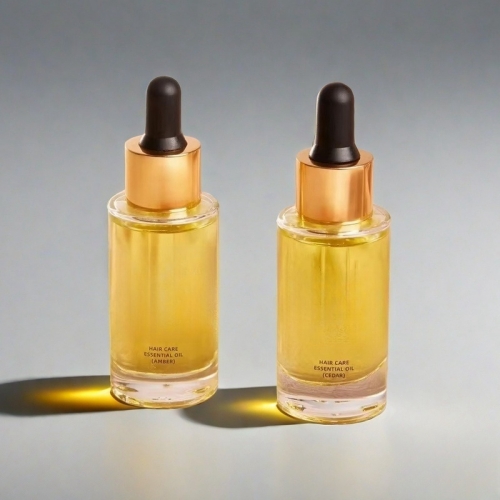
The material of the dropper tip directly influences the performance of the bottle. Each material offers unique properties that make it suitable for specific uses. Below is a comprehensive table highlighting the most common materials:
| Material | Key Features | Applications |
|---|---|---|
| Natural Rubber | Good elasticity; moderate chemical resistance | Pharmaceuticals, cosmetics requiring moderate resilience |
| Synthetic Rubber | Enhanced durability; wider temperature range | Laboratory pipettes with chemical resistance needs |
| Silicone | High heat tolerance; inert to most chemicals | High-purity or high-temperature pharmaceutical uses |
| Nitrile Rubber | Excellent oil resistance; strong abrasion resistance | Essential oils, oil-based cosmetics |
| Thermoplastic Elastomer (TPE) | Combines flexibility and strength; chemical resistant | Specialized applications with specific functional requirements |
Natural Rubber: Affordable and easy to use, but less durable under extreme conditions.
Silicone: A premium choice for applications requiring resistance to heat and chemical reactivity.
Nitrile Rubber: Ideal for oil-based products due to its superior resistance to grease and oils.
Selecting the correct material ensures the safe and effective dispensing of your product, while extending the lifespan of the bottle.
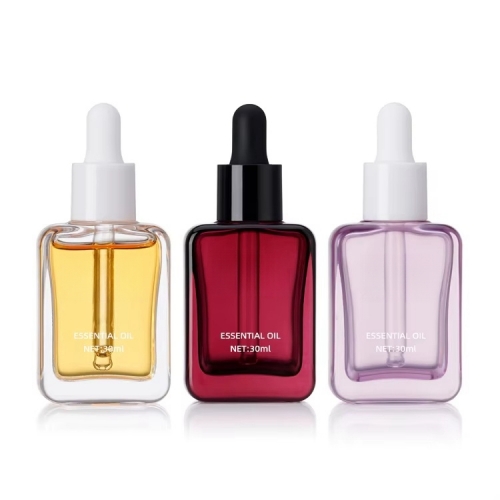
The shape of a glass dropper bottle plays a significant role in its functionality and visual appeal. Different shapes are suited to various applications, and their selection often depends on the intended purpose and user preferences.
| Shape | Features | Applications |
|---|---|---|
| Round Bottle | Classic design, easy handling | Essential oils, s, and medicines |
| Square Bottle | Compact, modern aesthetics | High-end cosmetics |
| Boston Round | Rounded shoulders, versatile use | Lab reagents and general-purpose dispensing |
| Bell Bottle | Unique and premium design | Luxury cosmetics |
| U-shaped Bottle | Ergonomic design, easy operation | Personal care products requiring precision |
Round Bottles: Their versatility makes them ideal for general use.
Square Bottles: Perfect for stacking and offering a luxury feel.
U-shaped Bottles: Provide ergonomic advantages for frequent usage.
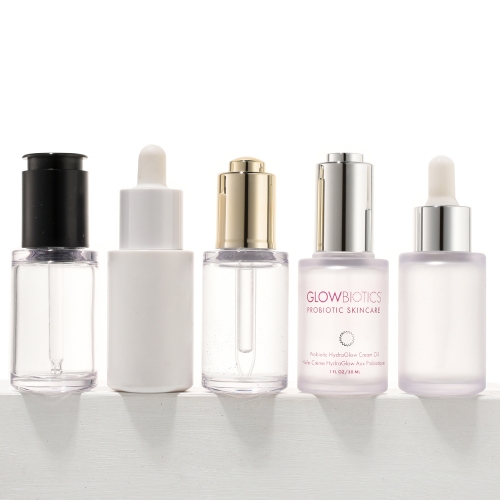
Customization is a powerful tool for aligning dropper bottles with branding strategies while enhancing their functionality.
Amber Glass: Provides excellent UV protection, ideal for light-sensitive formulations like essential oils.
Clear Glass: Showcases the product’s color and texture, ideal for serums and transparent liquids.
Frosted Glass: Adds a matte finish, giving a premium and sophisticated look to cosmetic products.
Metal Caps: Offer durability and a sleek appearance.
Plastic Caps: Lightweight and cost-effective, suitable for mass production.
Graduated Pipettes: Include measurement markings for precision, ideal for laboratory and medical uses.
Screen Printing: Allows detailed, durable branding directly onto the glass.
Hot Stamping: Adds metallic finishes for an upscale look.
Embossing: Creates tactile designs, enhancing user engagement and brand recognition.
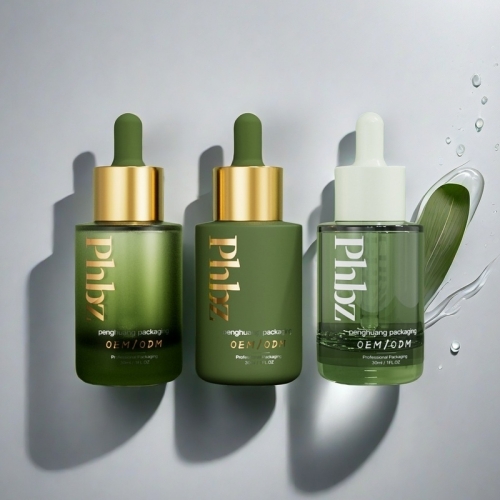
Selecting the right dropper bottle involves balancing several factors:
Evaluate Liquid Properties:
Match the dropper tip material with the chemical properties of the liquid.
Silicone is suitable for high-purity products; nitrile is best for oil-based solutions.
Consider Storage Conditions:
Amber bottles are essential for UV-sensitive liquids.
Frosted bottles offer moderate UV protection while maintaining aesthetics.
Align Aesthetic Needs:
Luxury products benefit from frosted or unique-shaped bottles.
Color-coded bottles differentiate product lines.
Optimize Functionality:
Include ergonomic shapes for ease of use.
Graduated pipettes ensure precise dosing for pharmaceutical applications.
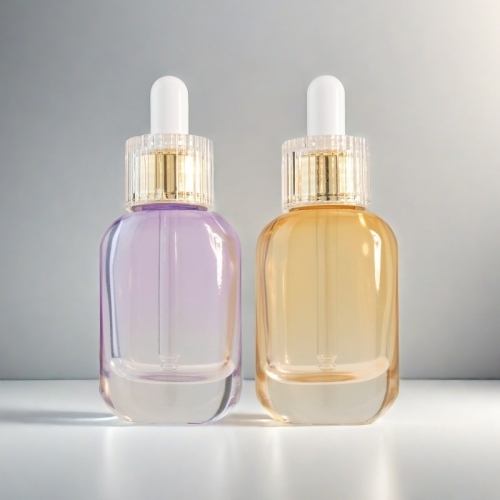
Q1: What factors determine the choice of dropper tip material?
A1: Key factors include chemical compatibility, temperature resistance, and the physical properties required for dispensing.
Q2: Are glass dropper bottles recyclable?
A2: Yes, most glass bottles can be recycled. Check with local facilities for proper recycling methods.
Q3: How can I enhance the visual appeal of my glass dropper bottles?
A3: Use frosted finishes, custom screen printing, and metallic hot stamping for an upscale appearance.
Q4: What makes amber glass ideal for essential oils?
A4: Amber glass blocks UV rays, protecting light-sensitive products and extending their shelf life.
Q5: Can I use the same dropper bottle for different products?
A5: While possible, it is not recommended as residues may affect the integrity of new formulations. Always clean bottles thoroughly before reuse.

Glass dropper bottles are versatile and essential for precise liquid dispensing. By carefully selecting materials, shapes, and customization options, brands can create bottles that combine functionality with aesthetic appeal. This guide equips you with the knowledge to make informed decisions, ensuring that your glass dropper bottles not only meet but exceed industry expectations.





